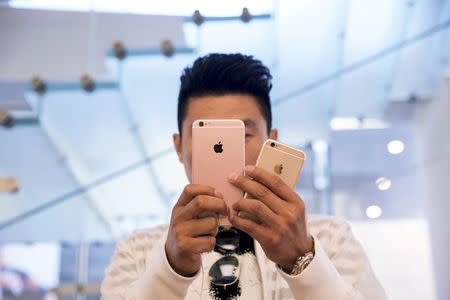People are holding onto their old iPhones for longer

If you’re been clinging onto an old, beat up iPhone, you’re not alone.
A new study from by Consumer Intelligence Research Partners has found that U.S. consumers are increasingly holding onto to their aging devices.
The market researchers’ findings indicate that in the March 2016 quarter, 51 per cent of old iPhones were either less than one year old or between one and two years old.
That’s a significant drop from the June 2013 quarter, when 66 per cent of old iPhones fell into the same category.
During the most recent stretch of time, consumers with iPhones more than three years old also jumped from five per cent to 12 per cent.
“Over the past eleven quarters, in some quarters the average age of a previous iPhone increased by as much as four weeks. It did decline in a few quarters, from mid-2014 to mid-2015, and again in the most recent March 2016 quarter,” Mike Levin, partner and cofounder of CIRP, said in a press release.
“Overall, over the past almost three years, the average age of a new iPhone buyer’s previous iPhone has increased by approximately three months.”
The study results were based on quarterly surveys of 2,767 consumers who had purchased iPhones, iPads and Macs between Sept. 2012 and March 2016.
Its release comes a little over a month after Apple announced disappointing second-quarter results.
The seemingly infallible tech giant posted its first year-over-year decline in quarterly revenue since 2003. It dropped 12.8 per cent from $58 billion in Q2 2015 to $50.6 billion.
iPhone sales were also down from Q2 2015’s record-setting sales of 61.2 million units to 51.2 million. The 16 per cent decline marked the first-ever drop in year-on-year sales for Apple.
Why people aren't upgrading
Josh Lowitz, partner and cofounder CIRP, said the iPhone upgrade fatigue could be explained by two factors: the slowing of the “rate of change in iPhone features” and a shift in the way consumers pay for their mobile devices.
While Apple’s latest iPhone, the 6s, was well received, it has been called underwhelming, and criticized for its similarity to previous models.
The iPhone 7 is rumoured to be launching in September.
Consumers are also getting their hands on iPhones in different ways that could be affecting how long they hold onto them.
Lowitz said mobile carriers, up until the past few years, have subsidized customers with an upgrade when they renew a two-year contract.
But now many offer monthly financing plans, which Lowitz said “effectively rewards customers“ to hold on to their current phones.
Or, consumers are buying their phones outright.
“This motivator appears to outweigh the impact of any early upgrade options that carriers offers with the new financing plans, and the increased availability of trade-in programs and used phone purchase websites.
The base model of an iPhone 6s currently runs at $899, while the iPhone 6s plus starts at $1029.
Apple also offers U.S. customers a chance to get a new device every year as part of its upgrade program for US$32.41 a month.
Levin said these factors could hold back Apple from expanding their market share.
“At least in the U.S., Apple increasingly sells new iPhones to current iPhone owners,” said Levin.
“This means the current installed base is the most important future customer market. In the absence of compelling new features, which will encourage early upgrade from iPhone 6 models, these factors will influence and probably limit U.S. iPhone sales in the coming quarters, relative to past quarters.”

 Yahoo Finance
Yahoo Finance 